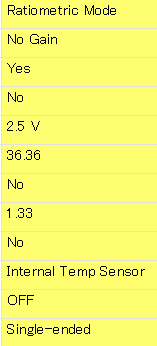Part Number: PGA300EVM-034
Hello,
I evaluate PGA300 in current mode with PGA300EVM-034.
a jumper is set in current mode and power is applied to PGA300, the current that should be less than 4 mA flows about 19 mA.
What do you think is the reason?
The sensor uses our company's one, and I confirmed that the ADC was changed by applying pressure when setting the sensor gain.
When the DAC was output from the GUI, the output current changed up to around 35mA.
I think the current consumption of the board is a problem, but what about?
Regards


